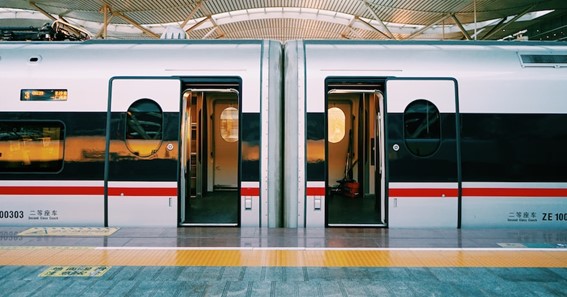As the global COVID-19 pandemic finally begins to settle, commuting has started to revive a bit as well. As such, train ridership is seeing a return to form, of sorts, and it remains to be a popular form of transportation throughout 2022. Keeping that in mind, train advertising also remains an important and effective form of marketing that brands and organizations can deploy in order to connect with and potentially convert consumers. Train advertising isn’t new to the marketing scene, not by any means, but knowing the top trends and best-practices involved in composing a powerful and impactful train advertising campaign can help your brand establish itself with a wide variety of consumer segments.
Not only that, but there are a variety of formats a train advertising marketing campaign can take on. Having an understanding of how each of these campaigns works can help you choose which train advertising strategies will be best for your organization.
click here – ICPC Recruitment 2022/2023 Application Form
Breaking Down the Basics
Train advertising has been around for a long while. It’s a popular form of transit-advertising which offers brands and organizations a lot of flexibility when it comes to campaign design and execution. Organizations can place their ads within the train cars themselves to give riders something to look at, read, or ponder. However, brands can also utilize the space on the platform, or within the train station itself. Even still, marketing professionals can make use of the space in the immediate vicinity leading to and from the train station, to catch the eyes of those passing by as well.
All-in-all, there are a variety of positioning choices that an organization can be faced with when it comes to designing their train advertising campaign. Not only that, but train advertising offers marketing professionals a chance to reach a variety of desirable consumer demographics because of the additional reach they have into suburban areas.
Many people who work in the city commute from a nearby suburb by train. Because of this, the advertising and marketing campaigns developed in and around trains can be extremely effective at generating organic impressions and connecting with a wider variety of consumer segments, and can even reach consumers with a lot of buying power.
This can lead to generous ROIs on train advertising, depending on the campaign, as some train advertisements are relatively inexpensive when it comes to marketing budgets.
Popular Types of Train Advertising
There are a wide variety of formats that train advertisements can take on which is great because they offer choices for brands big and small. 2-sheet advertising and back-lit dioramas, for instance, are two of the more inexpensive options for train-advertising. These types of advertisements are pretty simple to design, and feature a static image, or perhaps a series of static images. Both of these formats are around, but not exactly, 60 inches by 40 inches.
There are other more technologically involved train advertisements too like LED, digital, or video ads. These advertisements are typically only available in larger train stations, but are extremely effective at catching the eye of the target audience.
Finally, the two most expensive types of train advertising are exterior train-wraps and station domination campaigns. Exterior train wraps involve decorating the side or exterior of the train car itself with imaging or branding that communicates with consumers. This can be a fun, creative, and engaging way to get the word out about your brand.
Station domination, on the other hand, involves locking down an entire train station for a single brand or organization. This reduces ad-clutter, and really puts the spotlight on a single brand or organization. These campaigns are typically good for major brand-releases, or new product developments. Major films sometimes make use of this tactic, too.
click here – How To Get Rid Of Neck Fat? 9 Simple Ways
The Costs Involved
As mentioned above, the expenses involved in train-advertising are very dependent on the type of train advertising campaign a brand wants to execute. A campaign that uses 2-sheets, urban panels, and back-lit dioramas is going to be a lot less expensive than a station-domination campaign.
Cheaper train advertisement campaigns can run between $50-$2,000 while a station domination campaign can run anywhere between $25,000 and $75,000 for a 4-week campaign.
Measuring the Impact of Train Advertising
One of the few downfalls of train advertising, and transit advertising in general, is that it’s a bit difficult to measure when it comes to the results, impacts, and metrics. As such, many organizations fall back on tracking CPM and comparing that to conversion metrics.
A few Final Thoughts on the World of Train Advertising
Train advertising is a popular and effective way for brands and organizations to connect with a wide variety of consumers across their different groups of target audiences. Whether you’re a startup with a small marketing budget, or a well-known brand aiming at station domination, train advertising offers something for every marketing strategy there is.
